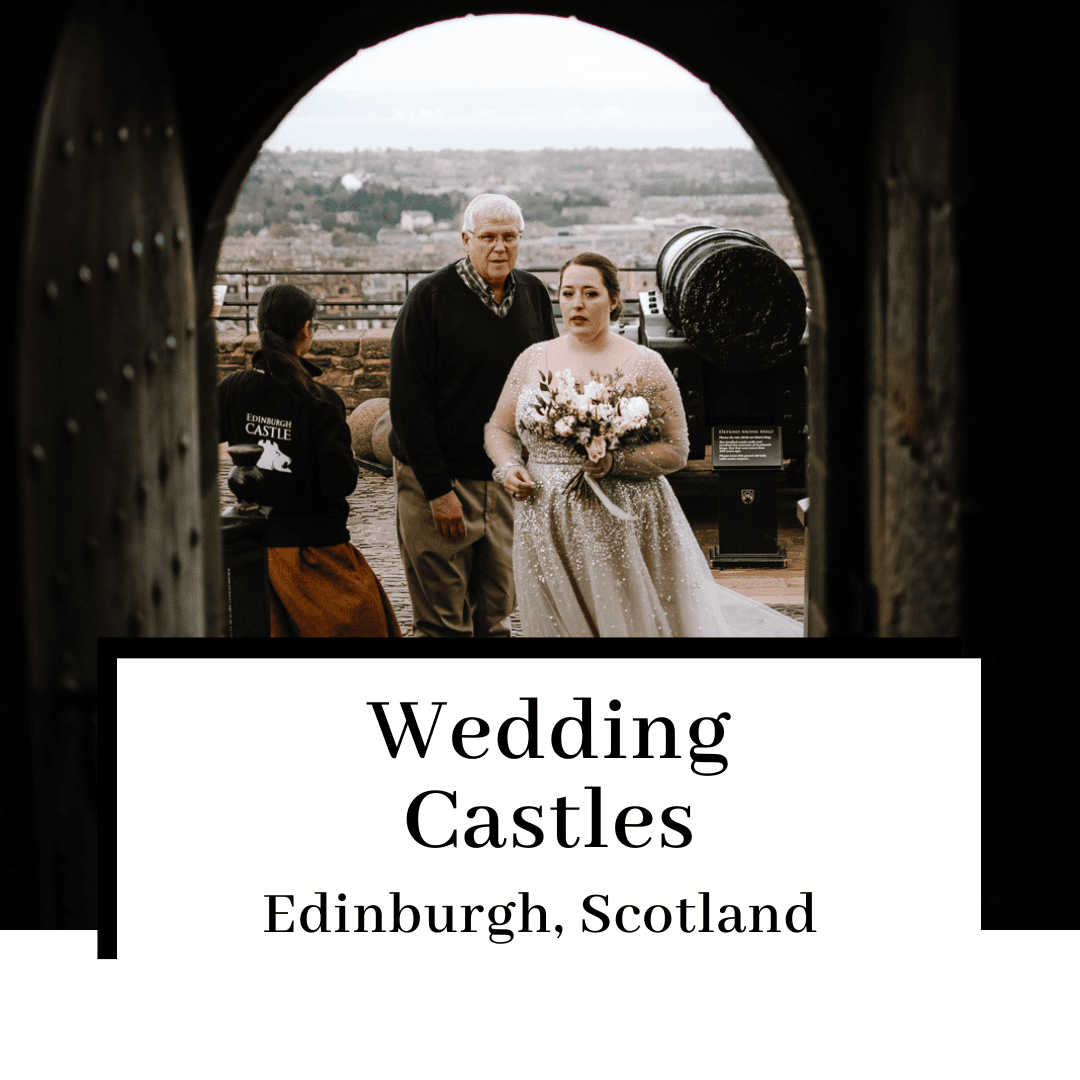This blog post may contain affiliate links. At no extra cost to you, we get a little bit of money when you purchase something through one of our links. Thank you for helping support a small business just by reading! You can read more about our affiliate disclosure policy here.
Scotland is vastly becoming a sought-after wedding hotspot – and for good reason!
Not only is this Gaelic country home to some of the world’s most spellbinding scenery, it also has less strict wedding and elopement regulations than that of most other countries (even other countries in the UK).
So, if you’re currently researching locations to tie the knot in, and have put Scotland down for consideration, we think this 2023 guide might just convince you!
Get ready to find out why getting married in Scotland may just be the best decision you make for your upcoming nuptials.
How to get the BEST wedding photos – tell me where to send these tips!
Why Should You Get Married in Scotland?
We think the question ought to be, why shouldn’t you get married in Scotland?!
Not only is the country teeming with some of the most jaw-dropping countryside in the world, it also houses incredible historical cities, such as Edinburgh, which hold magic of their own.
Also, anyone with Scottish ancestry may be very fond of tying the knot in this incredible country, owing to some of the many, many Scottish wedding traditions that will make your day just that extra bit special.
Also, unlike multiple other countries, there are no restrictions around non-UK residents getting hitched there (although there are a few hoops to jump through, which we will get to shortly).
Let’s look closer at the many appeals of getting married in Scotland.
Getting married in winter? Head over to this post instead
Portpatrick Wedding – Photographed by Wildling Weddings
Stunning Scottish Landscapes
Sure, every country has some lovely countryside that may look like something out of a Jane Austen novel, but Scotland’s backdrops are something else.
Dotted about the country are moody mountains, mysterious beaches, magnificent castles, enigmatic lochs, and many other urban and rural wonders just waiting to be explored.
Read More: 13 Best Locations for Your Castle Wedding in Scotland
Whether you’re a city-dweller or country-bumpkin at heart, there’s something for everyone, and you will be spoiled for choice when it comes to settling on the perfect wedding location for you and your partner.
Oh, and the best part? Unlike many other countries, Scotland holds no regulations about getting married outside (providing you acquire the landowner’s permission).
So, if you’ve always dreamed of getting married at the peak of a cloud-grazing mountain, or barefoot on the beach with turquoise waves lapping at your toes, you’ve (quite literally) come to the right place!
Just some of the incredible places in Scotland you can get hitched at include:
- The Hebridean Islands
- Arthur’s Seat, Edinburgh
- Glencoe, The Highlands
- Glenfinnan, The Highlands
- Inverness
- Ben Nevis
- Dundas Castle, South Queensferry
- Cairngorms National Park
- Cherrytrees, Scottish borders
- Kailzie Gardens, Scottish borders
- Edinburgh
- Glasgow
- Loch Ness

Scottish Wedding Traditions
The Scots love nothing more than a good tradition, and weddings are certainly no exception. Just some of the old-school native wedding customs include:
Tying the Knot
Yup. It’s more than just a phrase. The Scottish wedding tradition of tying the knot quite literally features just that; a rope or piece of cloth (bonus points if it’s tartan!) that loosely binds the wrists of the happy couple during the ceremony, the knot of which, when pulled, gets tighter, symbolising the importance of remaining as a team, even if the going may get tough.
Read More: Scottish Wedding Traditions: An In-Depth Guide
Having a Dram
Anyone with even a morsel of Scottish knowhow will be aware that “having a dram” means to indulge in a wee whisky tipple. This has remained a long-standing past-time of many a Scot (Scotland is, of course, the birthplace of Scotch Whisky), so it’s no surprise that “having a dram” is a pivotal part of most Scottish wedding ceremonies.
Oftentimes, the dram in question is shared via a pewter Quaich (double-handled cup or bowl), of which has a long and important history behind it.
Bagpipes
No Scottish wedding is complete without that quintessential Gaelic crooning better known as bagpiping!
Many couples will have one or more bagpipers leading the wedding procession to and from the ceremony (it is considered good luck to do so, and in olden days, Scots believed the bagpipes would ward off evil spirits and allow the happy couple to enjoy demon-free marital bliss!).
Kilts
Many (if not all) Scottish grooms, as well as a good percentage of the male guestlist, will rock a traditional Scottish kilt on the wedding day. Heck, even non-native male guests are encouraged to kilt up.
While Scottish brides will often don a traditional white wedding gown, they will often customise a small piece of their attire, such as their bouquet, or a sash, with tartan that matches that of their groom’s kilt.
Rules & Regulations for Getting Married in Scotland
Anyone in the world can opt to elope or get married in Scotland, which cannot be said of other countries in the world; the only rules are:
- Both parties must be over the age of 16.
- If the couple are non-UK residents, they must obtain a marriage visa at least three months prior to the date they intend to marry.
- Neither party may marry if they are currently in a marriage or civil partnership with someone else.
- Neither party may marry a member of their family (including adoptive members).
- Your ceremony must be conducted by an authorised registrar or celebrant.

Getting Married in Scotland: A 2023 Guide
So, if you’ve settled on Scotland as the ultimate location for your wedding or elopement, here’s how to get cracking with your planning!
Step 1: Choose Your Location
This may take some time and deliberation, because owing to the flexibility with getting married outdoors, there are SO many incredible locations to choose from, and it can be challenging to settle on just one! You can even get married on National Trust sites.
Read More: 8 Small Wedding Venues in Scotland To Say “I Do” In
Irrespective of wherever you settle, just be sure to acquire the landowner’s permission. Nothing spoils a wedding day more than being chased off by an angry Scot with a rifle!
Step 2: Set a Date
This is imperative, especially for non-natives when applying for their marriage visa.
Also, keep in mind that Scottish weather can be more-than-somewhat unpredictable (and it isn’t known for its high temperatures), so factor this in – especially if you’re planning an outdoor ceremony.
Step 3: Book Your Celebrant/Registrar
If an outdoor affair is a must, you will need to hire a celebrant to conduct your humanist ceremony.
A good place to start is by contacting the Humanism Society Scotland. You will not be able to complete your ceremony without the attendance of an authorised individual, so this part is pretty crucial!
Read More: What Is a Wedding Celebrant?
Step 4: Complete Your Paperwork
We know, we know – there’s nothing romantic about doing paperwork, but get it out the way pronto, and then you can focus on the more exciting stuff.
Once you’ve booked your registrar/celebrant, they will send you all the appropriate info on their front that you will need, and don’t be afraid to chase them up if they haven’t. Both you and your partner will need to submit copies of your M-10 forms, along with a registration fee, which is usually around £90.
Other paperwork you will need in order to complete this step is birth/adoption certificates, a valid passport, and proof of residence. For non-natives, you will need to apply for a marriage visitor visa, and once approved, you will need this as proof that you are legally allowed to marry in Scotland. You will also need to complete a Declaration of Immigration form, which can be found here.
All paperwork must be submitted at least three months before your wedding/elopement date.
Step 5: Get Planning the Big Day!
Once your paperwork has been approved, you can focus on the fun stuff, like booking your venue, establishing who will be your two witnesses (which is mandatory in all humanist weddings), collecting your marriage schedule (which you will need at the ceremony, so don’t lose it!), and choosing your outfits, etc.
If you are confused about any aspect of the ceremony planning – particularly as a non-native resident – contact your local embassy, Scotland.gov, or pepper your celebrant with questions! Just make sure you’re all set and good to go with the legal stuff.
Whether you’re considering a large wedding or an intimate elopement, Wildling Weddings can help you plan and photograph the festivities. View packages here.
Getting Married in Scotland FAQs
Yes, as outlined above American citizens are welcome to wed/elope in Scotland, providing they have obtained a marriage visitor visa.
Yes, any non-native residents are free to get married/elope in Scotland, providing they have obtained a marriage visitor visa.
- Any persons can get married in Scotland providing they:
- Are aged 16 or over
- In an opposite or same-sex relationship
- Not married or in a civil partnership with someone else
- Not closely related to the person they intend to wed
- Are capable of understanding and consenting to marriage
Scotland has endless beautiful options for weddings – whether indoors or outdoors – and selecting the perfect one can be tricky. You can find out more about getting married in Scotland here.
The number of options can be overwhelming. Get in touch to learn more about our Scotland elopement planning and photography packages.
You’re in the right place! If you need an extra pair of hands planning your big (or little) day in Scotland, all you need to have an incredible wedding can be found here.




